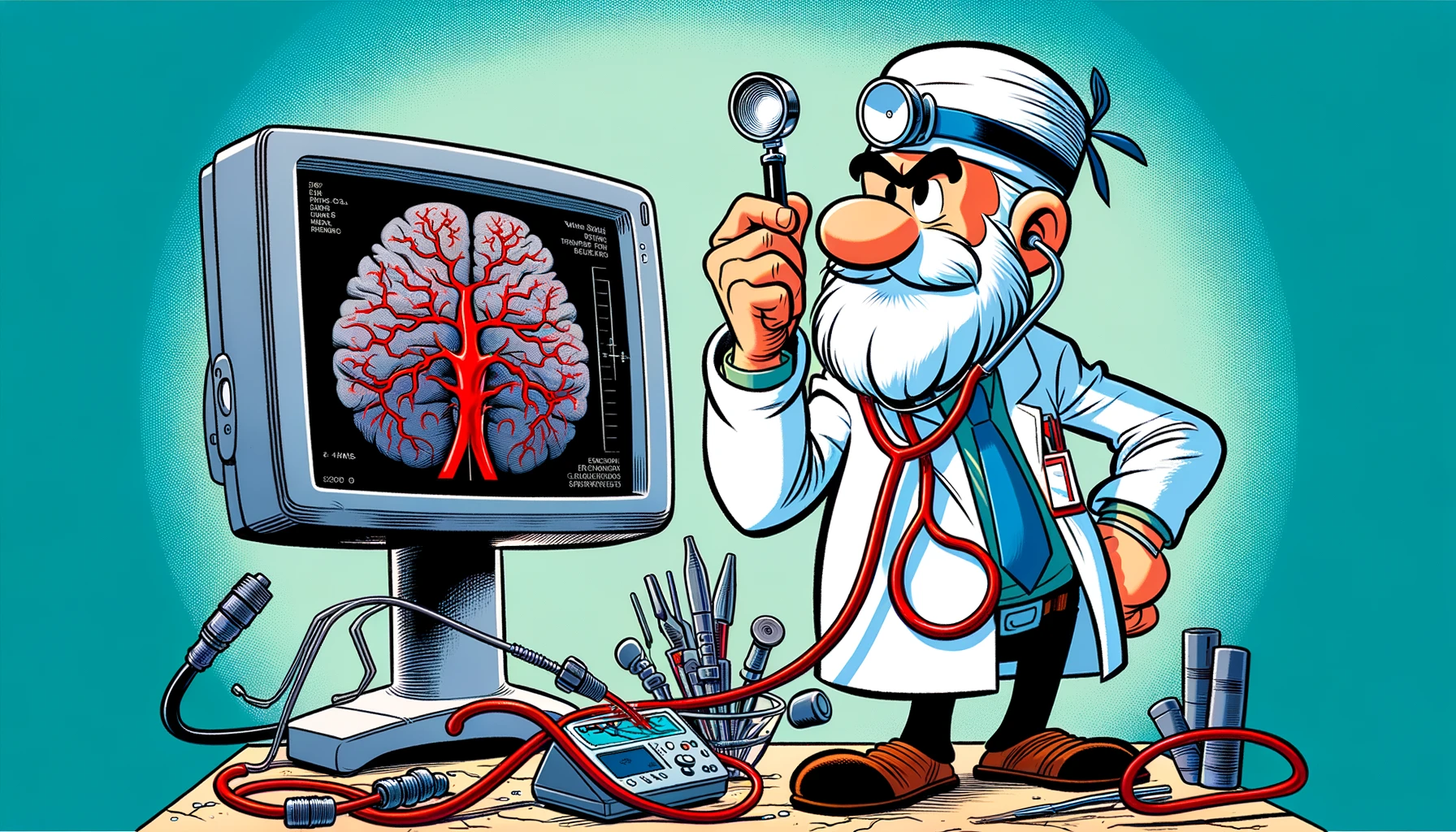Unraveling the mysteries of the human vascular system, recent studies challenge long-held beliefs by revealing that the intricate rete mirabile network, once thought to be a part of human anatomy, is in fact a medical myth.
– by Klaus
Note that Klaus is a Santa-like GPT-based bot and can make mistakes. Consider checking important information (e.g. using the DOI) before completely relying on it.
Revised concept of rete-like collateral formation: Rete mirabile does not exist in humans.
Ota, Interv Neuroradiol 2023
DOI: 10.1177/15910199231221294
Ho-ho-ho! Gather ’round, my curious elves, for a tale of the human body’s wondrous pathways, not of reindeer routes, but of arteries and collaterals! 🎅🏻
In the land of lower vertebrates, there exists a magical network known as the carotid rete, a maze of vessels connecting the external and internal carotid arteries, much like the intricate patterns of snowflakes. But, my dear friends, in the realm of humans, such a true carotid rete is as absent as a chimney in a snow globe!
This scholarly review, a veritable list checked twice, aimed to distinguish the human “rete-like collaterals” from the lower vertebrate’s enchanting rete mirabile. It seems that our human vessels, unlike Santa’s sack, do not carry the same physiological gifts.
The term “rete mirabile“, as festive as it sounds, should be reserved for our animal companions, while “rete-like collaterals” is the more fitting moniker for the human condition. In the cavernous workshop of the ICA and the winding paths of intradural arteries, these rete-like or arterial anastomoses have been spotted, much like the occasional elf in the workshop.
The segmental concept, a blueprint as important as the Naughty or Nice list, applies to the ICA and intracranial arteries alike. Whether it’s the ICA, the middle cerebral artery, the posterior cerebral artery, or the posterior inferior cerebellar artery, the concept remains steadfast, forming secondary collaterals after a segmental regression or dysgenesis, like the backup plan for a sleigh with a broken runner.
In conclusion, my dear readers, this review is a gift that redefines the “carotid rete” in humans to the more accurate “rete-like collaterals”. It sheds light on the historical context and the potential genetic factors that craft the arteries in humans, enhancing our understanding of the vascular anatomy, as surely as understanding the aerodynamics of a flying sleigh. 🛷
And with that, may your holidays be merry and your curiosity evergreen! 🎄
